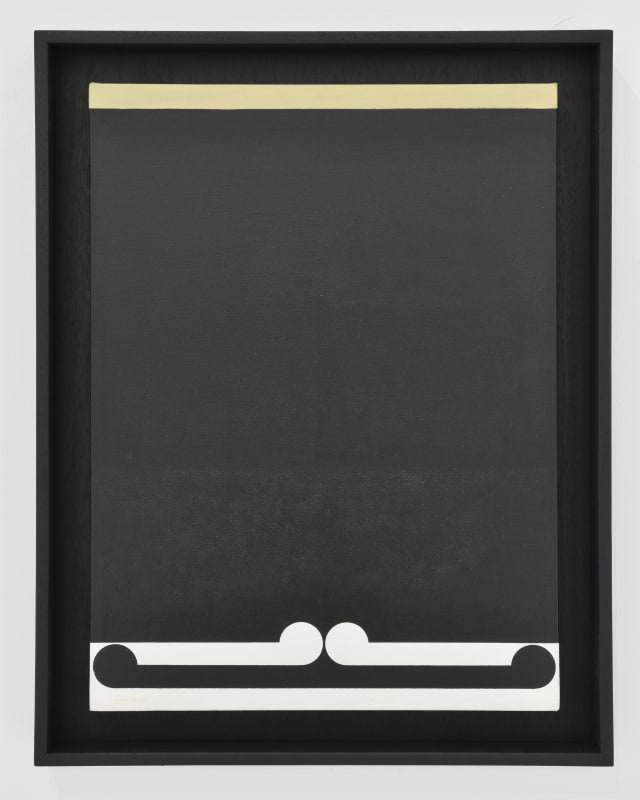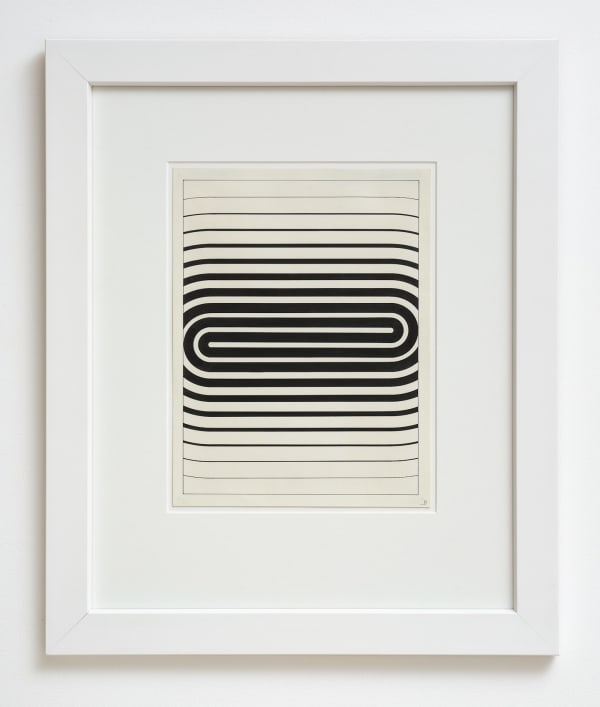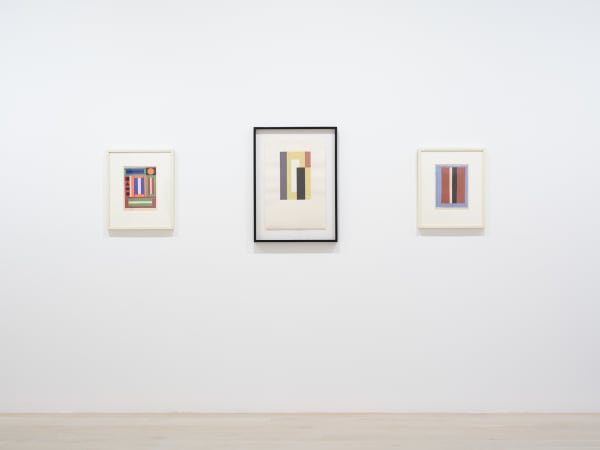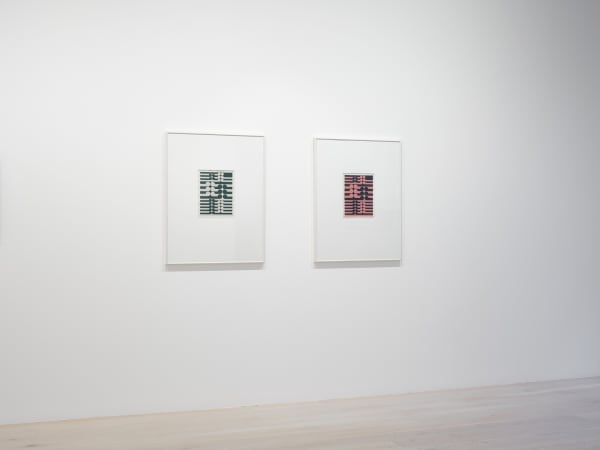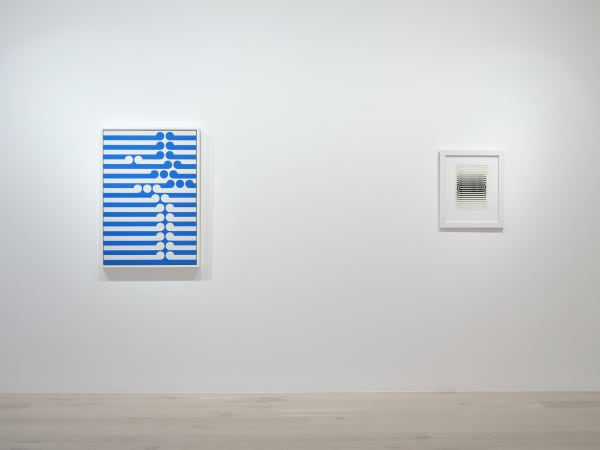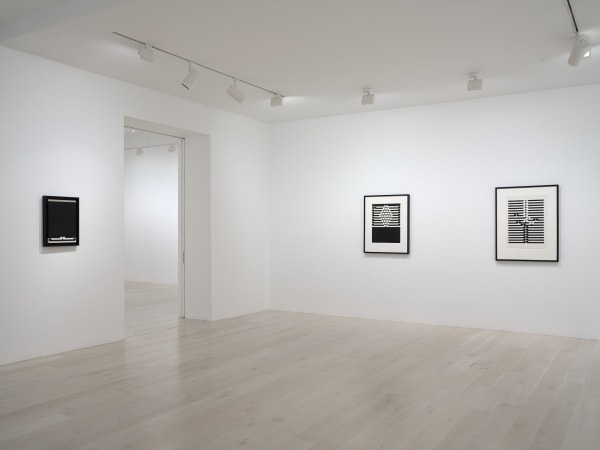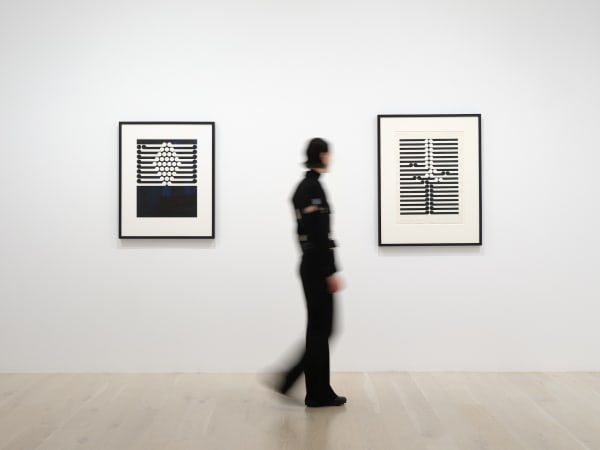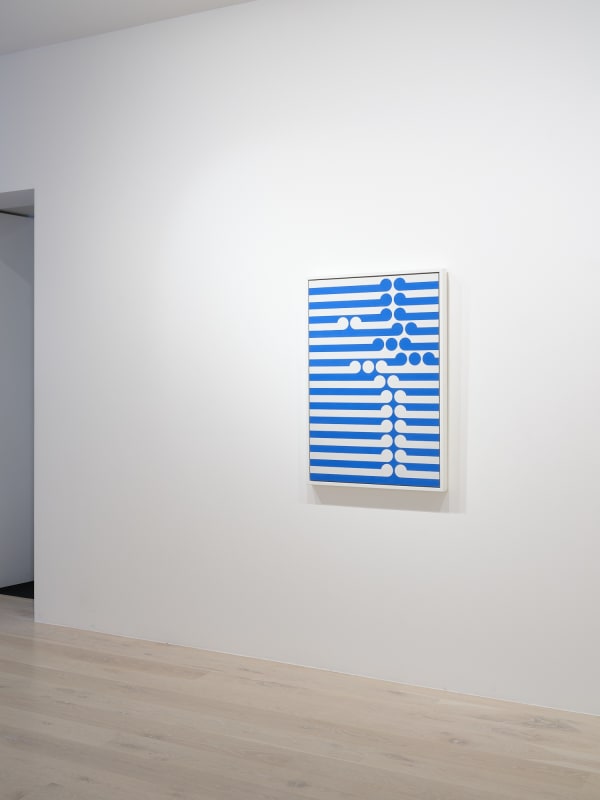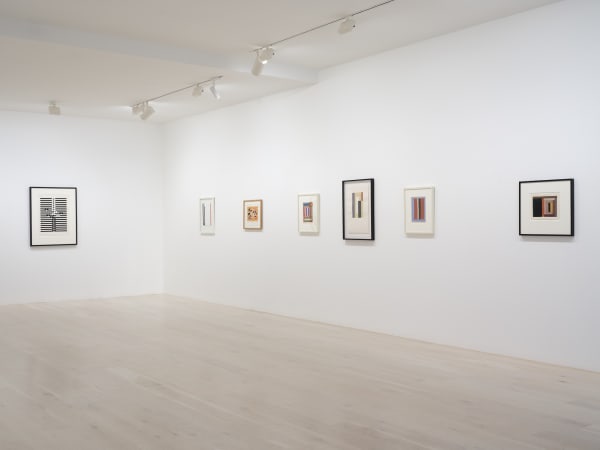Gordon Walters
Gordon Walters (1919-1995) was a pioneer who is widely recognised and celebrated as one of New Zealand’s most significant modernist artists. Walters’ career spanned over five decades and from 2017-2019 the comprehensive survey exhibition Gordon Walters: New Vision was developed and toured in partnership by Auckland Art Gallery Toi o Tāmaki and Dunedin Public Art Gallery.
From early in his career, Walters refined a select number of forms, developing a visual language of great focus. He drew on a wide variety of influences, Māori, Oceanic, American and European, and became well known for the use of the koru - the curving bulb form appearing in Māori kōwhaiwhai patterns. This exhibition brings together a selection of koru paintings from 1965-1995, which emphasize both the variation and repetition that characterises Walters’ unique poetic vision. This is complemented by several abstract works on paper including an early gouache, Airbourne, which travelled with the Gordon Walters: New Vision exhibition, and an untitled construction from 1987 comprising of coloured bands made from interlocking rectangles and squares.
-
 Gordon Walters, Untitled, 1974
Gordon Walters, Untitled, 1974 -
 Gordon Walters, Reworking of an idea of 1956, 1972
Gordon Walters, Reworking of an idea of 1956, 1972 -
 Gordon Walters, Airbourne, c.1955
Gordon Walters, Airbourne, c.1955 -
 Gordon Walters, Untitled, 1995
Gordon Walters, Untitled, 1995 -
 Gordon Walters, Untitled, 1965
Gordon Walters, Untitled, 1965 -
 Gordon Walters, Colour Study for 'Aotea', 1983
Gordon Walters, Colour Study for 'Aotea', 1983 -
 Gordon Walters, Genealogy III, 1971/2020
Gordon Walters, Genealogy III, 1971/2020 -
 Gordon Walters, Untitled, 1987
Gordon Walters, Untitled, 1987 -
 Gordon Walters, Untitled, 1956
Gordon Walters, Untitled, 1956 -
 Gordon Walters, Spiral Theme 3, 1966
Gordon Walters, Spiral Theme 3, 1966 -
 Gordon Walters, Untitled (Koru), 1965-73
Gordon Walters, Untitled (Koru), 1965-73 -
 Gordon Walters, Untitled, 1954
Gordon Walters, Untitled, 1954 -
 Gordon Walters, Untitled, 1956
Gordon Walters, Untitled, 1956
Gordon Walters is New Zealand's most influential abstract painter
- Julia Waite, Curator, New Zealand Art, Auckland Art Gallery Toi o Tamaki
His paintings were the products of careful and lengthy preparation and thought. They are technically immaculate and formally rigorous.
- Leonard Bell in Patrick Pound, Walters en abyme, Gus Fisher Gallery 2004, p 9
Gordon Walters (1919-1995) was a pioneer who is widely recognised and celebrated as one of New Zealand's most significant modernist artists. Walters' career spanned over five decades and from 2017-2019 the comprehensive survey exhibition Gordon Walters: New Vision was developed and toured in partnership by Auckland Art Gallery Toi o Tāmaki and Dunedin Public Art Gallery.
From early in his career, Walters refined a select number of forms, developing a visual language of great focus. He drew on a wide variety of influences, Māori, Oceanic, American and European, and became well known for the use of the koru - the curving bulb form appearing in Māori kōwhaiwhai patterns. This exhibition brings together a selection of koru paintings from 1965-1995, which emphasize both the variation and repetition that characterises Walters' unique poetic vision. This is complemented by several abstract works on paper including an early gouache, Airbourne, which travelled with the Gordon Walters: New Vision exhibition, and an untitled construction from 1987 comprising of coloured bands made from interlocking rectangles and squares.
Waters' first exhibition of koru paintings was at New Vision Gallery in 1966, which was a breakthrough having quietly developed the forms for a decade prior. He comments,
"I had the habit of looking carefully at whatever I came across and continued playing around with various motifs. In this pursuit I suddenly hit on the positive/negative use of the koru and knew immediately I had something. That was in mid-1956, but it took a long time to realise the potential fully and I tried hard to build on what I had . . . I did not think of making paintings until I felt my source material had been transformed sufficiently to be my own.''
- Gordon Walters to Michael Dunn, 5 October 1983 in Gordon Walters, New Vision Visitor Guide, Te Papa Tongarewa 2019
For every painting Walters created numerous studies, from these, the final works were meticulously crafted using a ruler and pencil. Balance and asymmetry were central to his explorations, with unexpected additions or subtractions creating an element of surprise.
